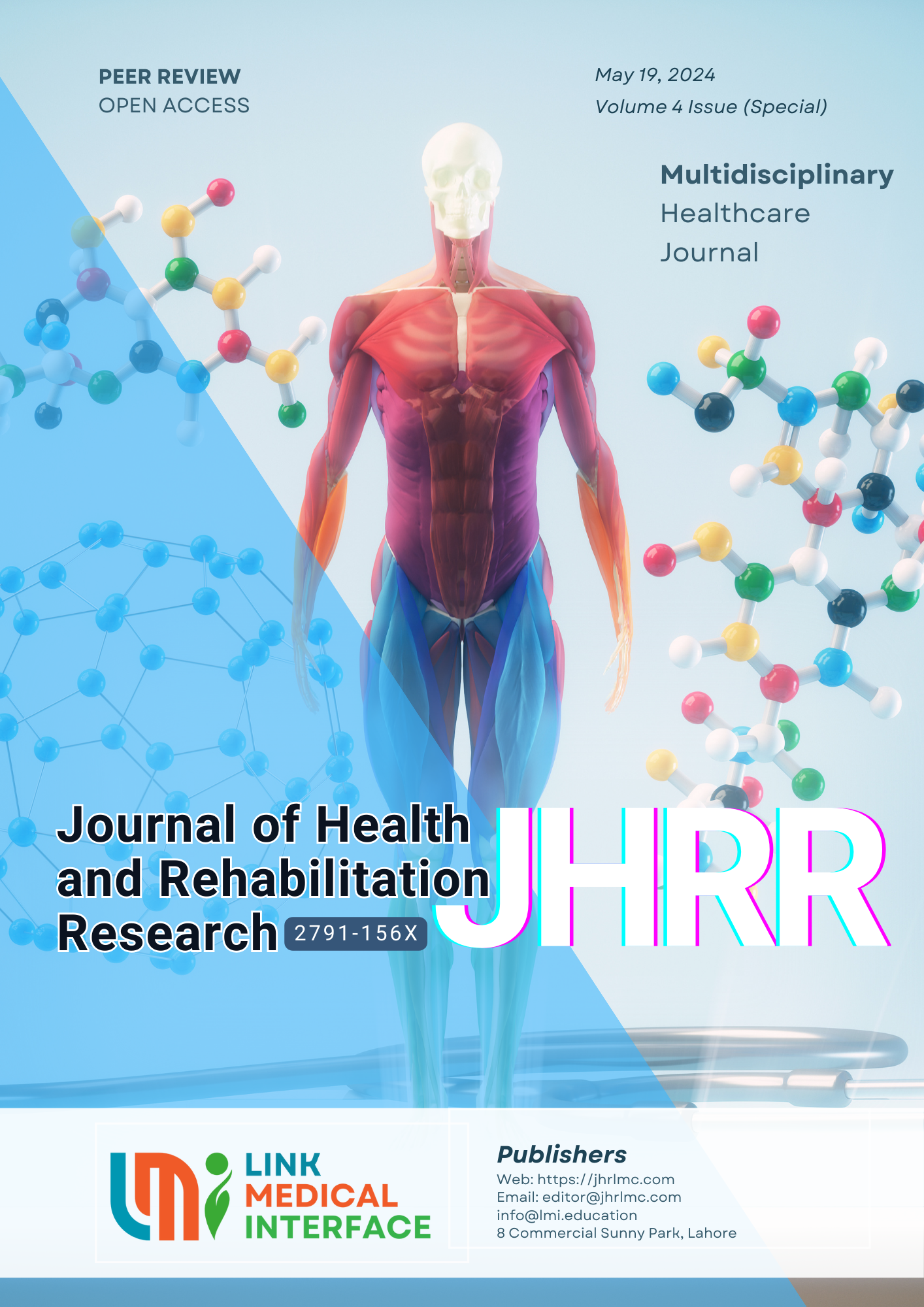Prevalence of Lumbago Among Construction Workers in Lahore, Exploring Its Correlation With Work Practices and Posture
DOI:
https://doi.org/10.61919/jhrr.v4iICIC1.1047Keywords:
Biomechanics,, Construction Industry,, Ergonomics,, Musculoskeletal Disorders,, Occupational Health,, Work-related Health IssuesAbstract
Background: The construction industry is a cornerstone of global infrastructure development but is also associated with significant health risks, notably musculoskeletal disorders. Construction workers are particularly susceptible to lumbago due to the physically demanding nature of their work, which often involves heavy lifting and repetitive motions.
Objective: The primary objective of this study was to ascertain the prevalence of lumbago among construction workers in Lahore, exploring its correlation with work practices and posture.
Methods: This cross-sectional study involved 100 construction workers aged between 20 to 40 years, employed at various construction sites in Lahore. Data were gathered using a self-administered questionnaire focused on job-related back pain occurrences within the last twelve months. The study utilized simple non-probability convenient sampling for participant selection. The variables measured included the duration of pain, its frequency, and the presence of radiating pain, alongside an assessment of weekly working hours to understand their impact on spinal health.
Results: Of the total participants, 72% reported experiencing back discomfort, with varying durations: 24% encountered pain from the first day, 33% between 1-7 days, 27% for 8-30 days, and 16% suffered for more than 30 days. About 55% of the workers experienced radiating back pain. Nearly all participants (99%) worked over 40 hours per week, indicating a significant correlation between long working hours and the prevalence of lumbago. A negative correlation was found between poor posture and pain severity (p < 0.05, r = -0.92).
Conclusion: Lumbago is highly prevalent among construction workers in Lahore, particularly affecting those aged 20 to 40 years. Factors such as working position and extensive working hours significantly contribute to the onset of lumbago. There is a critical need for interventions focusing on ergonomic education and the redesign of work practices to mitigate these risks.
Keywords: Biomechanics, Construction Industry, Ergonomics, Musculoskeletal Disorders, Occupational Health, Lumbago, Work-related Health Issues
Downloads
References
References are available on request from author at any time.
Published
How to Cite
Issue
Section
License
Copyright (c) 2024 Bisma Saleem, Dr. Zain ul Bashir

This work is licensed under a Creative Commons Attribution 4.0 International License.
Public Licensing Terms
This work is licensed under the Creative Commons Attribution 4.0 International License (CC BY 4.0). Under this license:
- You are free to share (copy and redistribute the material in any medium or format) and adapt (remix, transform, and build upon the material) for any purpose, including commercial use.
- Attribution must be given to the original author(s) and source in a manner that is reasonable and does not imply endorsement.
- No additional restrictions may be applied that conflict with the terms of this license.
For more details, visit: https://creativecommons.org/licenses/by/4.0/.






